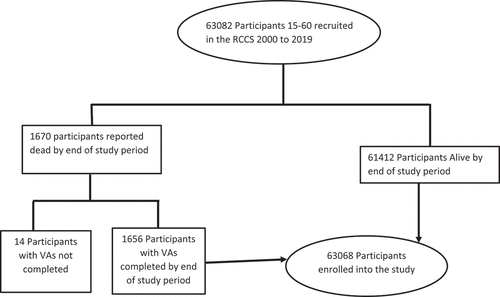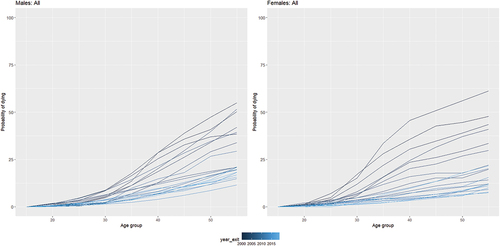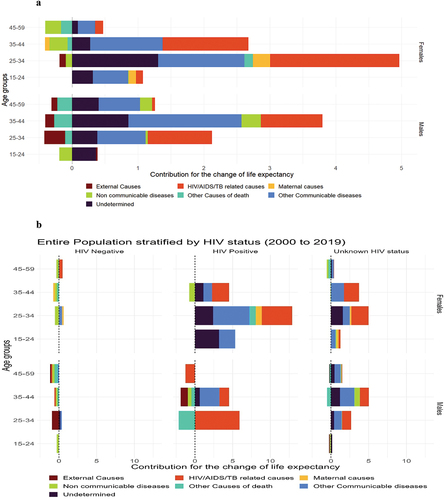Figures & data
Figure 1. RCCS cohort composition for the cause of death analysis.

Table 1. Characteristics of the study population, and death rates (per 1000 pyo) at different periods (RCCS) - Rakai Community, Uganda (1999 to 2019).
Figure 2. Mortality rates: Age-specific probability of dying between age 15 and 60 - Rakai Community, Uganda (1999 to 2019).

Table 2. Cause-Specific Mortality Rates (per 1000 pyo) in the RCCS – Rakai Community, Uganda (1999 to 2019).
Table 3. Average number of years lived in adulthood (RCCS) - Rakai Community, Uganda (1999 to 2019).


